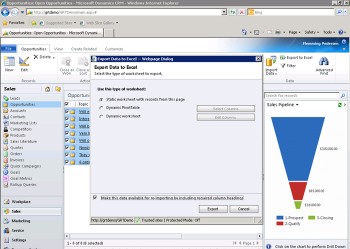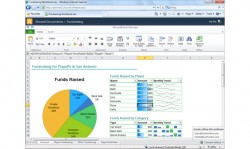Your price is too high. These are five words that can strike fear into the heart of many salespeople. Yet it’s a known fact that the lowest-priced quote most often doesn’t win the business and that low pricing doesn’t keep the customer long-term. Why?
 What are the key differentiating factors you must be able to communicate to your prospective customer? How do you deliver this message so the customer will fully understand your added value? Let’s take a closer look at this important issue and how to win the business and keep it, not buy it and lose it.
What are the key differentiating factors you must be able to communicate to your prospective customer? How do you deliver this message so the customer will fully understand your added value? Let’s take a closer look at this important issue and how to win the business and keep it, not buy it and lose it.
Price, Cost, Value
You’d be surprised how many salespeople believe these three terms mean the same thing. They don’t. Let’s take a moment to look at the actual definition of these important words in the world of sales…
Price: The sum or amount of money or its equivalent for which anything is bought, sold or offered for sale. What did I pay to obtain the requested product or service?
Cost: The total expense incurred from owning or using a purchased item or service. What is the expense incurred by your customer for this product or service over its lifetime of use?
Value: A product or service’s relative worth, merit or importance when evaluated as a return on total investment. Were the amounts paid to acquire, own/use and retire a product or service exceeded by its performance toward the desired result? Did I get what or more than I expected?
Price and cost evaluations are based completely on the objective measurement of how much. Value evaluations are based on a complex combination of objective and subjective measurements that are unique to each customer. Price and cost are simple arithmetic.
Value is more like complex mathematics involving wants, needs and satisfaction. Customers will tell you that price/cost are all that matter, but they will leave you for failure to deliver them a good value as they perceive it.
What Determines Value?
Before we approach this topic it’s critical to remember who determines whether or not your product/service delivers value. That person is the customer. Period. It doesn’t matter what we think our value may be. It only matters if the customer believes it’s valuable to them.
Therefore, it stands to reason that the only way to know a customer’s perception of value is to learn it from them. You’ll need to dig and dig deep if you want to build a competitive advantage for your company. Here are some sample questions that will help you understand how and where to dig…
Know Your Customers
What level of commitment and performance do they promise to their customers?
What makes them different/superior to their competition?
Who is their customer and what are they trying to communicate with their graphics? Value is a downstream process. If you want to make your customer delighted with you, you need to make their customer delighted with them.
Who did you use for your last project? There are a host of reasons this question is important and why you must be completely prepared to address their responses. You’ll need to know your competition inside and out.
Know Your Competition
What do they sell to their customers versus what they actually deliver?
Do you have any former customers of theirs who now do business with you?
What was their experience and why did they switch? Are they willing to say so?
What did you like/dislike about their performance as a partner in profit?
Did they do the job right the first time?
Did they deliver on time and on budget?
Did they guarantee their work?
Were they flexible in meeting any changes to the project?
These questions are only but a few examples of those you should ask, but you can see how the more you know about your competitor’s ship the better you know where to aim your torpedo.
Know Your Company
The questions about your competition should also be asked about your own company. From there you will need to be able to communicate what makes your company stand out and provide examples to prove it… Experience with similar projects, your firm’s unique attention to detail, any satisfaction guarantees you provide, how your company’s commitment to them mirrors their commitment to their customers, and your professional assistance and expertise are important elements to include when helping them understand your value proposition.
Your goal is to be a valued partner they can rely on, not just a one-and-done supplier. What you know and what you say mean nothing if you don’t make it happen. You can’t just make the sale and then punt. Be active. Stay engaged in the project from start to finish. Over communicate. Solve problems. Be a key part of the difference between the price your customer pays and the value they receive. It doesn’t cost anything and it pays over and over again for you and your customer.


 If you’re looking to beef up your sales and marketing, now is an excellent time to explore the latest tools from Microsoft with little to no upfront investment.
If you’re looking to beef up your sales and marketing, now is an excellent time to explore the latest tools from Microsoft with little to no upfront investment. 

